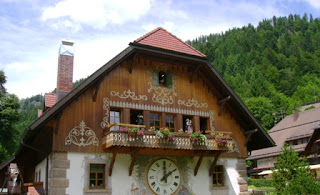Visiting San Francisco Japanese Tea Garden - a quintessential garden of leisure
Yes, the San Francisco Japanese Tea Garden has a tea house with tea and fortune cookies. However, it is not a tea garden in the literal sense of the term, which is generally a more private space to host a tea ceremony. This spacious garden is a place of leisure ensconced within four gates inside the larger Golden Gate Park, where you can quietly stroll around and absorb the breathtakingly beautiful landscape. Each section of the 5-acre San Francisco Japanese Tea Garden harmoniously blends in with the others. Credit goes to Japanese landscape architect Makoto Hagiwara for expanding this botanical marvel from an exhibit depicting a Japanese village at the 1894 California Midwinter International Exposition to the stunning masterpiece that it is today. Starting from the entrance gate and culminating with enjoyable refreshments at the tea house, there is much to take in as you stroll around the San Francisco Japanese Tea Garden.
A serene Buddha called Amazarashi-No-Hotoke, originally cast in Japan and lovingly restored in 2000, is a dominant feature near the Long Bridge. Read about it in the Art and Architecture SF blog.
 |
| Buddha statue |
 |
| Lantern of Peace |
Something that you just cannot miss is the unusual wooden bridge in the shape of a half-drum, the other half reflected in the water below. In Japanese, it is called the Taiko Bashi. Many visitors go up the challenging steps to stand at the bridge's mid-point to have their photos taken.
 |
| Drum Bridge |
In the main pond of the garden, you will be thrilled to catch glimpses of golden koi (carp, which are freshwater fish).
 |
| Koi pond |
Amid all the greenery you will come across an unusual space where sand and gravel cover the ground. This is a garden in itself, known as a Zen Garden designed by landscape artist Nagao Sakurai. The unusual patterns you see on the ground here represent undulating waves.
 |
| Zen Garden |
One of the four gates of the tea garden is the Temple Gate which you can glimpse from various angles. Adjacent to it is the beautiful five-storied red Pagoda, said to have been designed as a Buddhist's treasure tower, and below it a small waterfall makes its graceful way down a small hill.
 |
| Temple Gate |
 |
| Stone Lanterns |
Contact information
Garden Address
75
Hagiwara Tea Garden Drive
San
Francisco, CA 94118
Timings: The garden is open daily, from 9 a.m. to 5.45 p.m. during the summer months, and from 9 a.m. to 4.45 p.m. during the winter.
Website: San Francisco Japanese Tea Garden
To book tickets online visit https://gggp.org/japanese-tea-garden/









Comments
Post a Comment